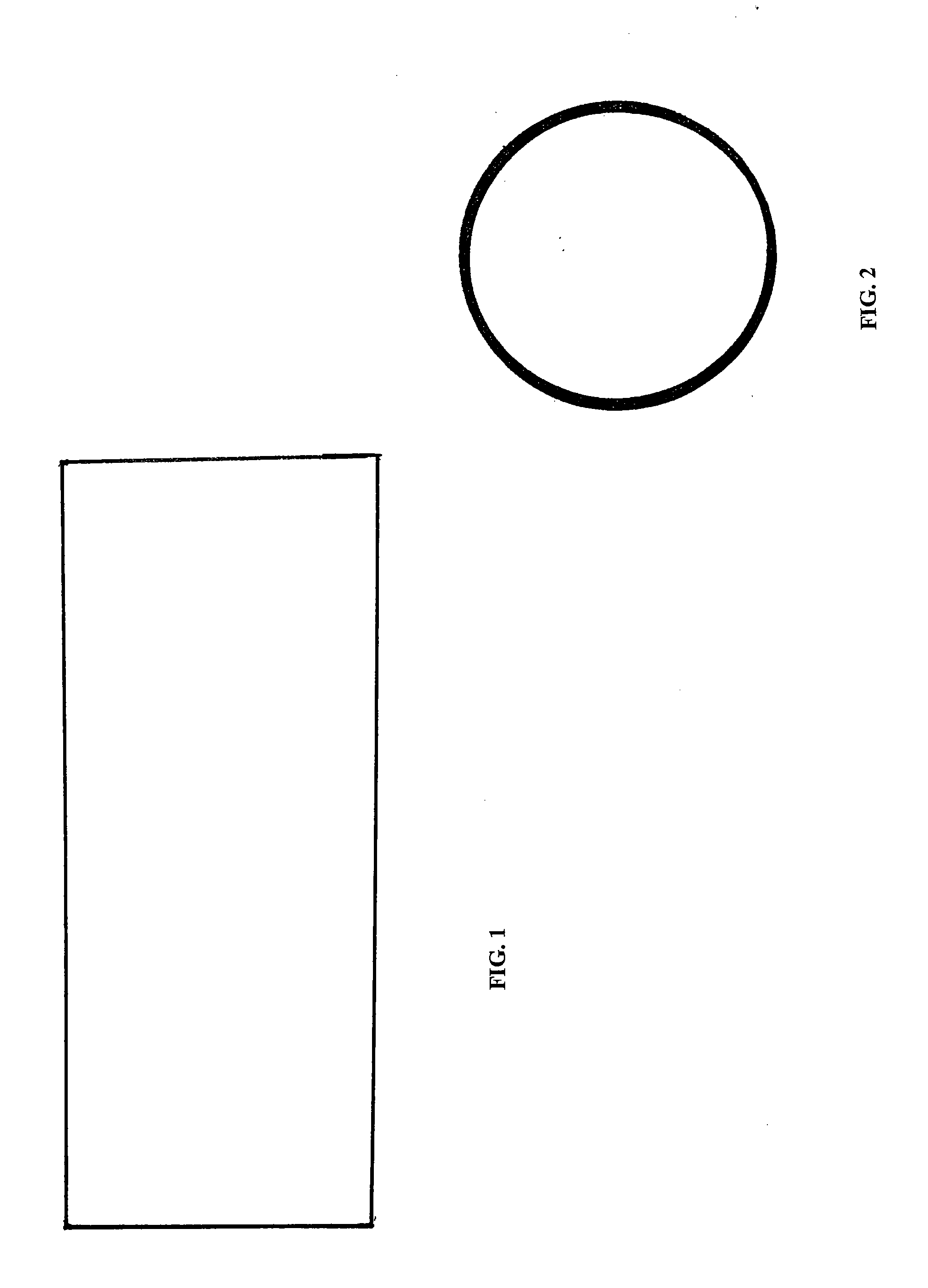Inert filler for explosive device and method for making and loading same
- Summary
- Abstract
- Description
- Claims
- Application Information
AI Technical Summary
Problems solved by technology
Method used
Image
Examples
example 1
[0030]The inert filler described herein was subject to density analysis. In particular, a number of density sections were taken from an inert filler having 33.3 weight percent glyceride, 33.3 weight percent dead burned gypsum, and 33.3 weight percent sodium chloride. The results of the analysis are presented in Table 1.
[0031]The Laboratory Procedure for measuring Density (In Vacuo) is described and is embodied in ASTM D792-66 Specific Gravity and Density of Plastics by displacement; MIL-STD-650, Method 202.1 Density (In Vacuo) which is incorporated herein by reference. Density is measured in grams / cubic centimeters.
[0032]To measure density, the following is required: a balance: accurate to within 0.0002 grams; milli-Q water—degassed by vacuum containing 0.01% aerosol; wire with loop on end to carry sample; crystallization dish or beaker of suitable size; thermometer; support; glass standard; and low form crystallization dish. First the glass standard and test material are conditione...
example 2
[0045]The reactivity of various materials with the inert filler material was performed. Method 504.1, according to Military Standard 650, which is incorporated herein by reference, was used as follows.
[0046]The specimen is first prepared. The specimen consists of 5 g of the inner filler having the percentages described herein and 5 g of the contact material (the material placed in contact with the inert filler). A 2.5 g portion of each of the materials is tested as received except in the case of solvent containing contact materials (paints, adhesives, etc.) which would in normal usage be in the dry state. In this case the materials are air dried on glass plates and removed in the form of films for testing. The remaining portion of the inert filler and contact material are reduced to a practicable fineness for intimacy of contact. Explosives are pulverized under gentle pressure in an agate mortar; metals are tested as fine milled chips or fillings; films, cloth and paper are cut into...
example 3
[0072]The inert filler described herein was subject to an analysis of reactivity with aluminum using the above-described method of Example 2, aluminum being the “contact material.” In particular, an inert filler having at least 33.3 weight percent glyceride, 33.3 weight percent dead burned gypsum, and 33.3 weight percent sodium chloride was mixed with aluminum according to the method. The results of the analysis are presented in Table 2.
TABLE 2Gas Evolution from Mixture of Inert Filler with AluminumGas SourceVolume (mL)Inert Filler0.07Aluminum0.18Mixture0.06Reaction0.16
[0073]whereby:
Volume (mL)Reactivitynot reactive0.0 to 1.0negligibly reactive1.0 to 2.0very slightly reactive2.0 to 3.0slightly reactive3.0 to 5.0moderately reactive>5.0excessively reactive
[0074]Under current standards for explosive devices, a reactivity level up to an including slight reactivity (3.0 mL) is considered acceptable compatibility. As can be seen, the inert filler provides results indicating that the mixtu...
PUM
| Property | Measurement | Unit |
|---|---|---|
| Percent by mass | aaaaa | aaaaa |
| Percent by mass | aaaaa | aaaaa |
| Density | aaaaa | aaaaa |
Abstract
Description
Claims
Application Information
 Login to View More
Login to View More - R&D
- Intellectual Property
- Life Sciences
- Materials
- Tech Scout
- Unparalleled Data Quality
- Higher Quality Content
- 60% Fewer Hallucinations
Browse by: Latest US Patents, China's latest patents, Technical Efficacy Thesaurus, Application Domain, Technology Topic, Popular Technical Reports.
© 2025 PatSnap. All rights reserved.Legal|Privacy policy|Modern Slavery Act Transparency Statement|Sitemap|About US| Contact US: help@patsnap.com

